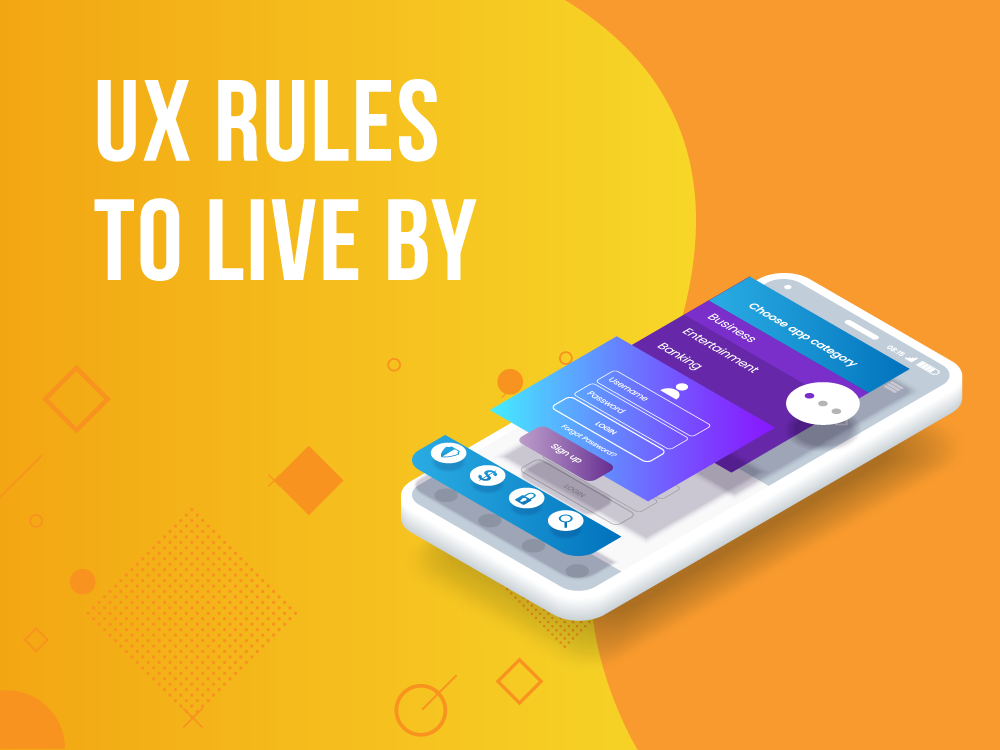The term “UX” refers to the user experience and is often bandied about when talking about web and app design. User experience encompasses a wide variety of things, from the function of your site to the ease of navigation to the quality of the content. When designing a website, it’s crucial that you follow certain UX rules. The better your UX is, the more likely you are to keep visitors on your site and to keep them coming back which means more chances for conversions.
We checked with our own Envisionaries and asked them to share their own best practices for designing a UX-friendly site.
UX Rules According to Us
Daniel: Know Your Market
When it comes to user experience design, many people easily overlook they key point of what this type of design is. So many people see a problem, want to increase engagement, try and provide a unique experience for people, and forget what is stated in the name of this design field, user experience. Designers and business people are more tempted to jump straight to solutions to solve interfaces and what they consider experience designs but do not actually step back and find the true problem. When it comes to it, this design doesn’t start with finding solutions, it starts with finding problems and pain points. It comes with truly knowing your market/demographic. A trick of the trade that seems so obvious, but is highly overlooked, is to always know who you are designing for and why.
Users are going to a site, using an app, finding a service for a specific reason. The user has a problem or need. It is a UX designer’s job to fully understand their problems and needs and then present solutions that work efficiently to solve them. UX design is always about the user, it’s in the name, but in this fast-paced world of always looking for quick solutions, we easily can lose sight of why and who we are designing for in the first place.
Holly: Make it Scannable
Design for the website scanners, which is 99.9% of the population. Keep it simple with limited options to prevent the user from becoming overwhelmed. Strive to make eye-catching, easy-to-read elements with an obvious hierarchy. By creating a simple scrolling path you can keep the user’s attention by helping them recognize there is relevant info below the fold.
Steph: Think of the User
When it comes to UI/UX for websites, there’s one way to be successful and that is to always consider the user. When you start to plan a website, chances are you probably already have at least some idea regarding your target audience, but keeping the factors that will draw people in and the design elements that will encourage them to move through the intended flow of the site will set you up for success.
Best Practices to Know
Keeping that in mind, the following are some essential UX design rules that you should follow when creating your website:
- Ensure fast load times. Visitors to your website aren’t going to have the patience for slow loading pages. In fact, 40% of all visitors will leave your site if a page takes longer than three seconds to load. If you have a slow loading page, it will result in a high bounce rate, which can hurt your SEO rankings. There are many ways that you can improve the speed of a slow loading page, including enabling compression, optimizing images, improving server response time, leveraging browser caching, and minimizing scripts on the page. (Psst–we have this free tool to help you quickly identify issues!).
- Make navigation easy. Visitors that have trouble navigating your website and finding what they’re looking for are not going to have a good experience. Make sure you have a clearly marked navigation menu, a link to your homepage that can be accessed from anywhere on your site, and a search field to make it even easier to find what visitors are looking for.
- Make your site responsive. If your site isn’t mobile-friendly, then it won’t display properly on mobile devices, making it almost impossible for mobile visitors to use. Implement a responsive design to make sure your website is properly displayed no matter what size screen the visitor is using.
- Make use of negative space. A cluttered webpage can make it difficult for visitors to find what they are looking for and can make it visually overbearing. Make use of negative space so that visitors can easily scroll through your page to see what it contains.
- Use calls-to-action. Your visitors aren’t going to know what to do unless you tell them what to do. Include calls-to-action strategically to encourage visitors to take a specific action, such as contacting you or downloading additional content.
- Make your content scannable. Nobody wants to read a giant wall of text on your website. When creating content, make sure that readers can get the gist of it by scanning it. You can do this by breaking up your content into smaller paragraphs, using headers for different sections, using bullet points, using numbers, adding images, and more.
- Test your links. There’s nothing more frustrating than clicking on a link only to find that it’s broken. You’ll want to avoid 404 errors, so make sure to create custom 404 redirects and that you regularly test for broken links.
- Maintain a consistent visual design. Make sure the visual design you choose, such as the fonts and colors, are consistent throughout your website. You don’t want visitors to wonder if they’ve stumbled onto a new site because the visual design differs so much from page to page.
- Make contacting you easy. Provide complete contact information, including name, address, email, and phone number, on every page of your site so that visitors can contact you at any moment.
UX isn’t a tactic, it’s a strategy
Remember that UX isn’t just a tactic you use to make a better website, it’s an overall strategy you use to help your customers learn more about who you are, what you do, and eventually convert them. Whether that conversion is a free demo, a product purchase, or a download, your users have to feel comfortable making the next click and then the next and then the next.
Any more questions about UX? Reach out to us–we love talking shop.
-FINAL(01-00)-White&Blue-01.svg)





